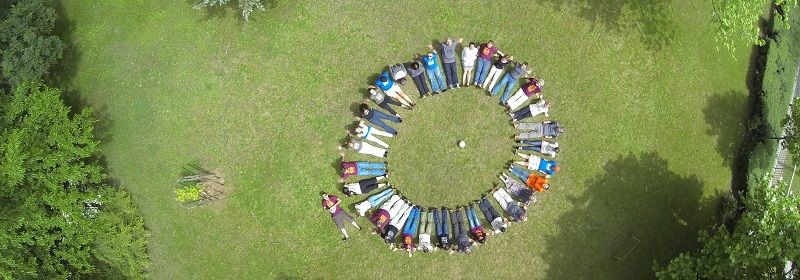About us

The roots of animated film making go back in Kecskemét all the way to 1929, when Kálmán Mátis painter, graphic artist and drawing teacher made his artwork titled The Dream of the Little Boy Scout, which even won an award in London at the boy scout jamboree of that time.
The start
In 1971 Pannónia Film Studio decided to establish a site outside the capital, and Ferenc Mikulás was appointed to head the new studio. The construction of the studio on Liszt Ferenc Street was started in 1980, and it was opened on 17 June 1981. Ferenc Mikulás recruited colleagues at the vocational middle schools of arts in Szeged and Pécs, he visited all the leaders of the drawing study groups in the county, and he queried well-known graphic artists and painters, whether they could recommend young people. In 1971 the County Council and Pannónia published a joint graphics invitation for applications, the goal of which was to select the best artists. Among the experienced colleagues in Budapest many agreed to continue the professional training of the new staff, those in Kecskemét received many help for instance from Marcell Jankovics and József Gémes.
While at the beginning they only participated as co-operators in the works of Pannónia, later on they already started the production of their own films.
The first films
The first animated film series, to which the studio contributed with design and the completion of partial tasks, was Mouse on Mars in 1975. Later on Ágnes Bálint, the editor of the Children’s, Youth and Educational Editor’s Office of Hungarian Television initiated to prepare an animated series with small creatures and tiny animals. Based on the script she wrote, directed by Szabolcs Szabó, the Water-Spider, Wonder-Spider series was a huge success, and the Television ordered the second, then the third series, as well.
The studio started the production of its most well-known and longest film series, Hungarian Folk Tales, in 1977. The idea originated from the director of the studio, who still in his geodesic surveyor times decided that – experiencing the deterioration of Hungarian peasant culture – if he would have the opportunity, he would do all that is possible in order to save these values. The pre-selection of the tales was done by Ágnes Kovács, a researcher of the Ethnographical Research Group of the Hungarian Academy of Sciences. On the part of Pannónia Marcell Jankovics was asked to handle the series. The second series was already prepared in the co-direction of the local drawing staff, while later on Marcell Jankovics took part in the work only as an expert, giving over the directing tasks to Mária Horváth and Lajos Nagy. At the first episodes each tale still had another taleteller, but then Gyula Szabó proved to be such a perfect choice that he became the regular taleteller of the series.
The first original film is connected to the name of László Hegyi Füstös. He completed his work titled Mistrels in 1979. The studio could book its first significant foreign festival success in 1982, when the film of Mária Horváth titled Miracles of the Night received a second place in its category in Ottawa.
Fellowship system
For the purpose that the studio is not excluded from the animation bloodstream of the country and the world due to its geographical distance from the centre, it decided to establish an international fellowship system. From the mid-1980s fellowship recipients have arrived from Iceland, Germany, Belgium, Netherlands, the United States, Canada and France to Kecskemét, while for the local colleagues almost this was the only opportunity at that time to travel abroad.
Well-known series
In 1985 the series titled Tales of King Mathias was completed, directed by László Ujvári, then after a year, by using the episodes of the series, the full feature film version. Later on, based on the original film of Pál Tóth, How Can You Frighten a Lion?, a television series with 2 x 13 parts was made with the title Leo and Fred. In 1987 Ferenc Mikulás offered it to Marcell Jankovics to make a film series from the Hungarian world of legends. The title of the series became Legends from Hungarian History.
After the change in the political system
With the realisation of the legal possibilities in 1991 the studio became an independent state-run company. In 1993 35 colleagues purchased 63% of the state share of assets, and Kecskemétfilm Ltd. was formed.
In the meantime the second successful generation has also appeared, among others from the children of those working at the studio. In addition to the two-dimensional animated films the production of 3D films has been also started, while with the help of the internet the colleagues have participated in the realisation of numerous large-scale international productions. Among these the most significant ones are the Spanish Chico and Rita and the Irish The Secret of Kells full animated feature films, which subsequently were nominated for an Oscar, and the French artwork titled Wolfy, the Incredible Secret, which received the honour of best animated film at the 39th César Award Ceremonies.
In 2011 Ferenc Mikulás and Kecskemét Animation Film Studio led by him were honoured with a Hungarian Heritage Award.
KAFF
The studio is the originator and main organiser of the Kecskemét Animation Film Festival that has been organised since 1985. Details: www.kaff.hu

